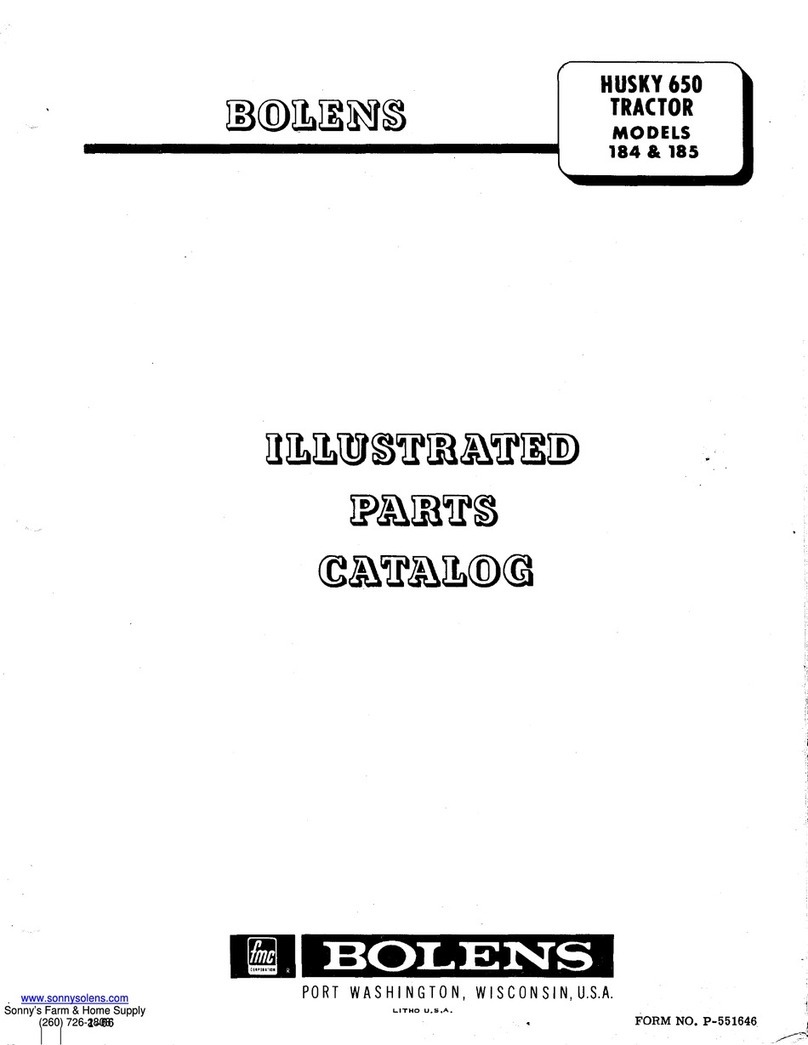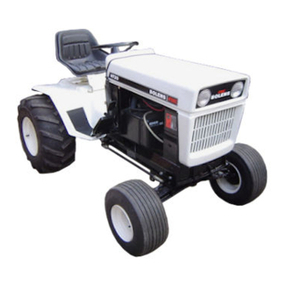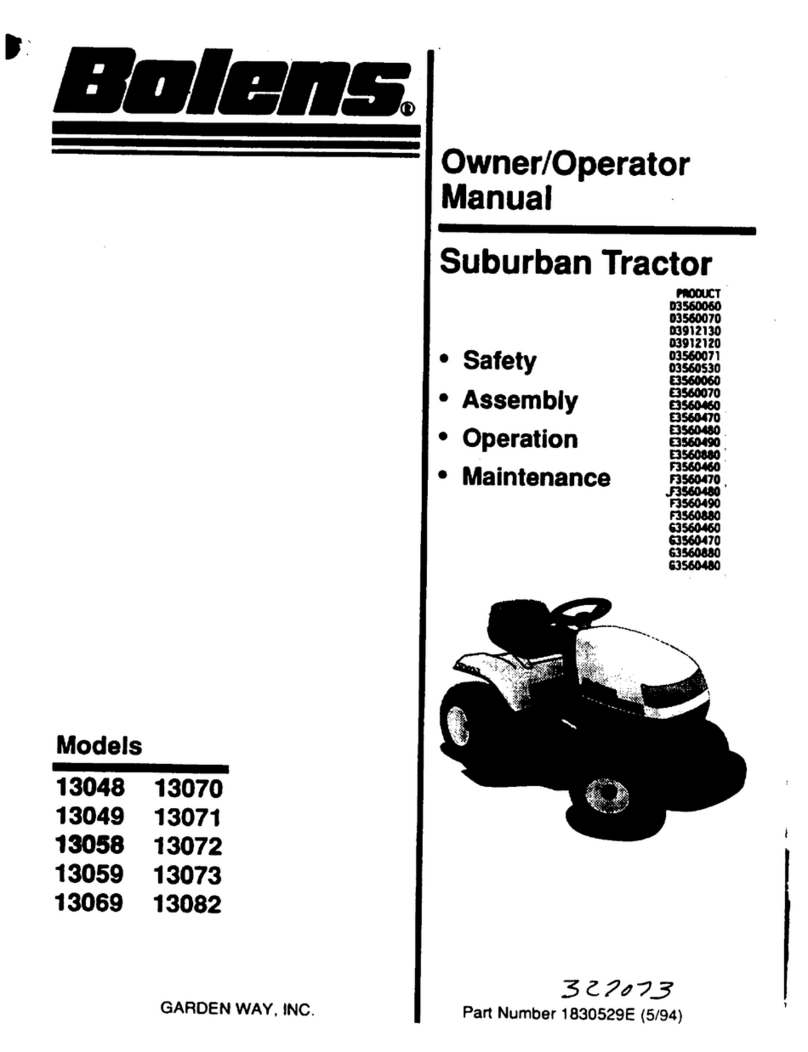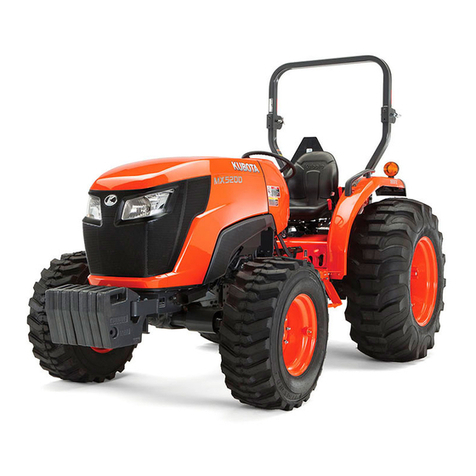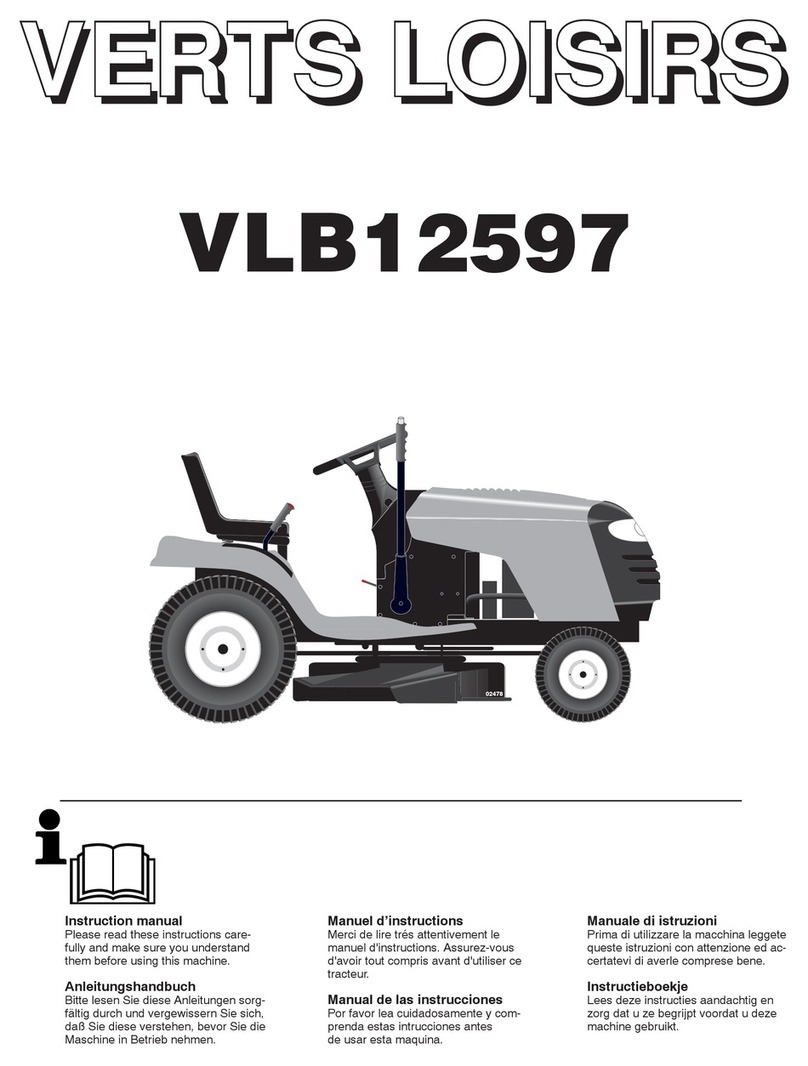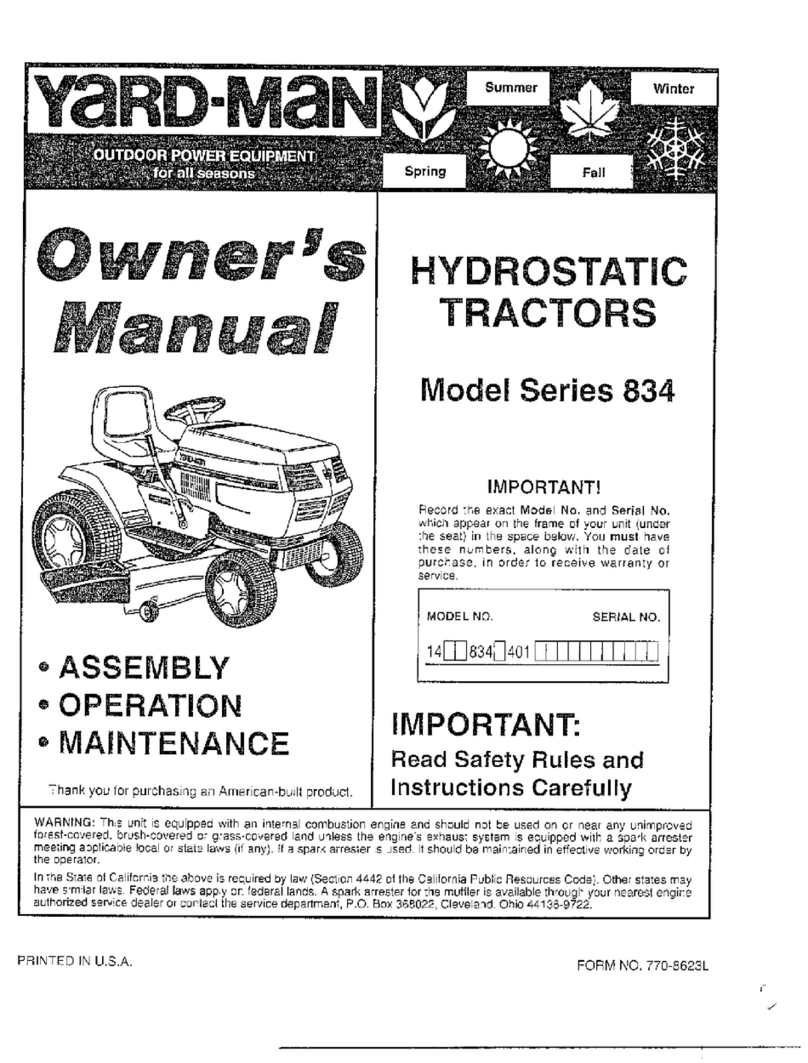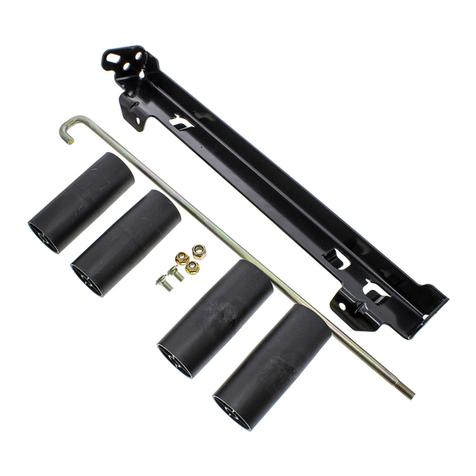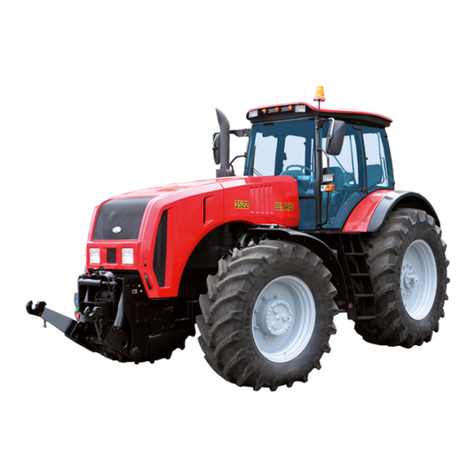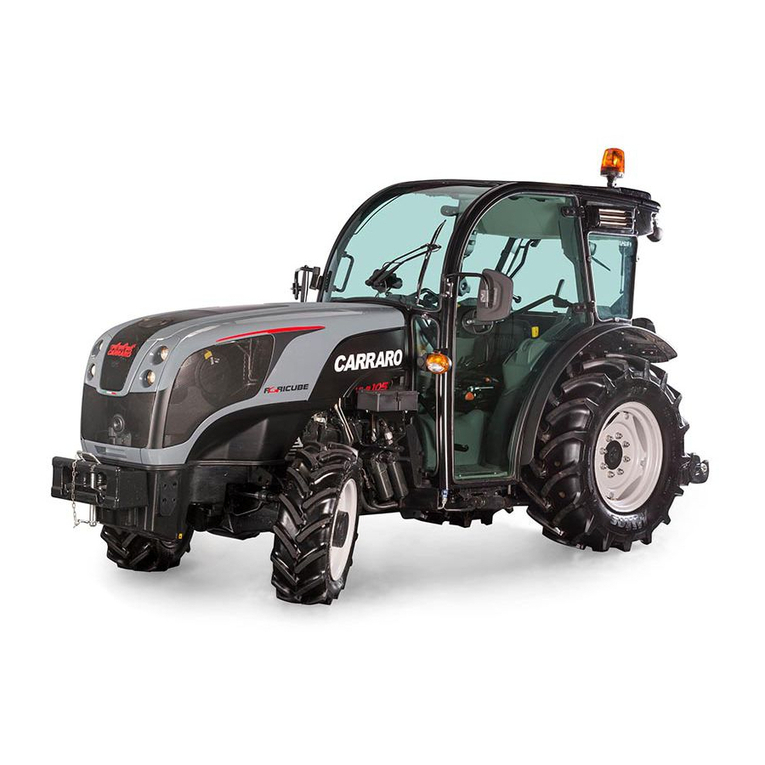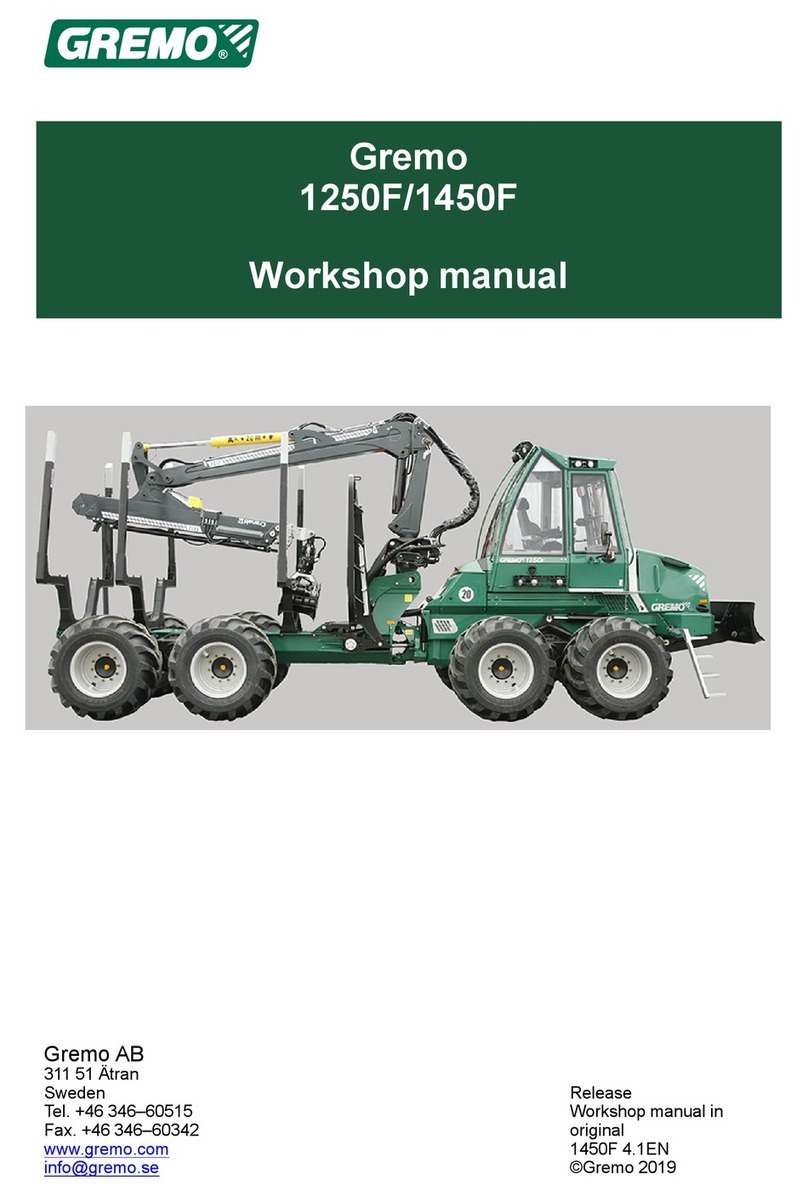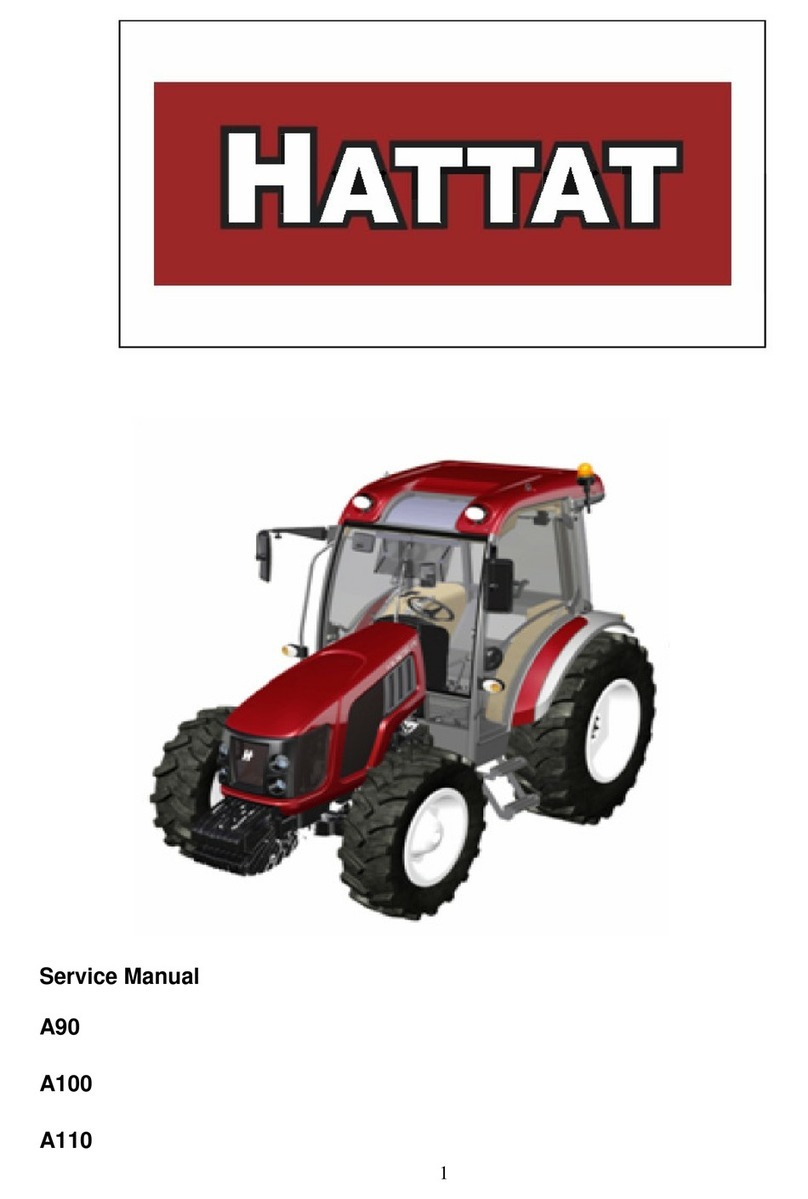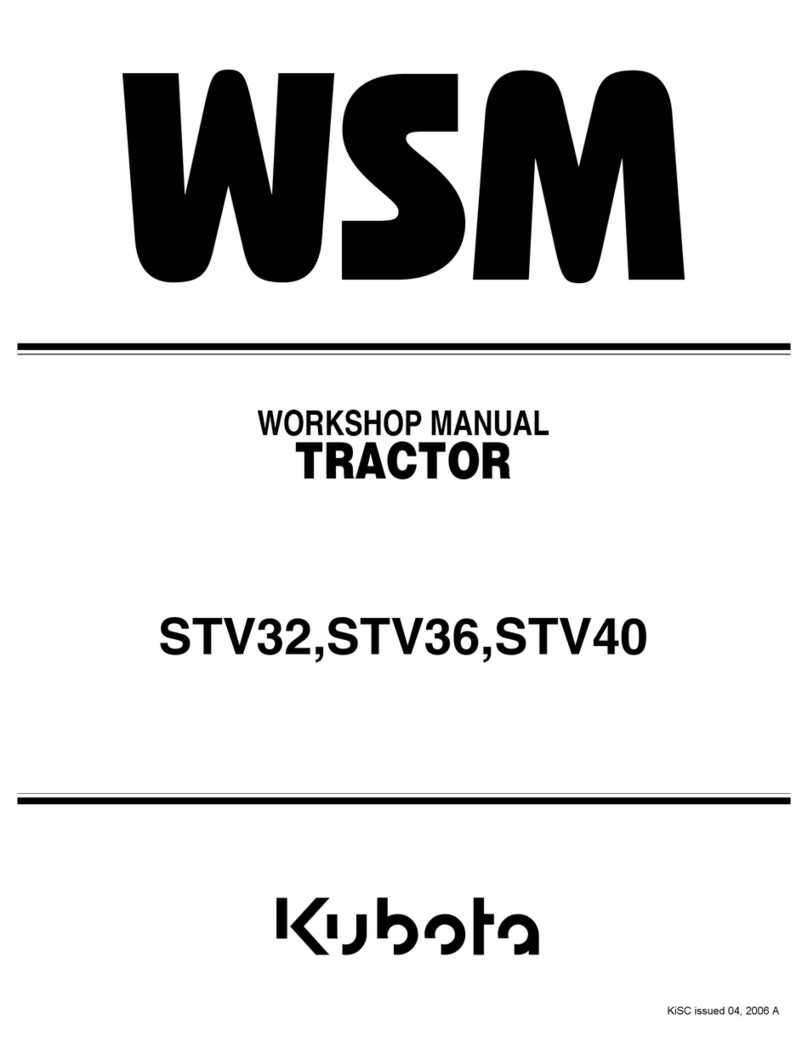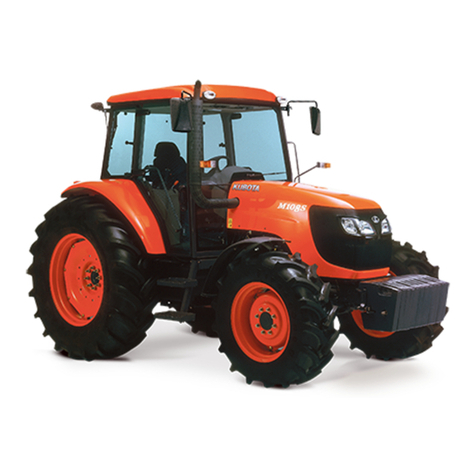
6
6. To stop engine, turn key OFF (counterclockwise)
and place gear shift lever in NEUTRAL, setting
brake if necessary. Remove ignition key when trac-
tor is not in use.
EMERGENCY STARTING
In the event of electrical failure, remove the genera-
tor belt and proceed as follows:
1. Check PTO safety clutch (should be in OFF posi-
tion) and gear shift (should be in NEUTRAL). Turn
ignition key clockwise.
2. Pull choke knob all the way out (to fully close
choke). Experience will indicate need for more or
less choking due to variations in temperature, grade
of fuel, etc.
3. Turn throttle knob counterclockwise, if necessary,
to unlock it. Pull throttle knob out about half-way
until after engine has started, then adjust to desired
RPM and lock at this setting, if desired, by turning
knob clockwise.
4. Wind the starter rope around the starter pulley.
Give a quick, steady pull on starter rope. Repeat,
if necessary, until engine starts.
5. Choke should be partially opened (knob pushed
forward) as soon as engine starts and then gradually
pushed all the way forward as the engine warms up.
In normal operation, choke knob should be in OPEN
(forward) position for best engine efficiency and fuel
economy.
6. To stop engine, turn key OFF (counterclockwise)
and place gear shift lever in NEUTRAL, setting brake
if necessary. Remove ignition key when tractor is
not in use.
7. If engine fails to start, recharge or replace bat-
tery.
STOPPING THE ENGINE
1. If the engine has been operating under a heavy
load and is hot, do not stop it suddenly. Allow the
engine to idle for approximately three to five min-
utes. This will reduce the engine temperature more
quickly and evenly than stopping the engine.
2. Turn ignition switch off.
RUN – IN PERIOD
Before operating the tractor at full load, it should
be operated at one-half throttle for approximately one-
half hour with no load applied. After the first half
hour of operation, run the tractor at full throttle with
no load applied for an additional one-half hour.
Attach a light load to the tractor. Operate the trac-
tor with light load for a period of three hours at full
throttle. The tractor is now ready for maximum
load operation.
NOTE
Always operate the tractor at full throttle
when heavy and light work loads are applied.
Use gear ratios to obtain safe and desirable
ground speeds. The governor will control
for any increase or decrease in power re-
quirement.
PREVENTATIVE MAINTENANCE
Operational maintenance and preventative mainte-
nance are synonymous. When neglected, unneces-
sary down time and costly repairs can result. A
little time spent each day by the operator on pre-
ventative maintenance will lead to longer operating
life of the HUSKY.
The removal of debris, dirt and grease accumula-
tions are considered normal maintenance practices
and can help discover minor difficulties before they
become troublesome.
BATTERY (Fig. 7) - Keep cables and terminals clean
and apply a light coat of vaseline or oil for protec-
tion. Check battery bracket for corrosion and keep
clean. Check water for proper level. Never loosen
hold down clamps until you have removed battery
cables from the battery post. Always remove ground
(-) cable first.
FUEL TANK (Fig. 8) - Fill with clean, fresh gaso-
line of regular grade. DO NOT MIX OIL WITH GAS-
OLINE! Check to see that vent hole in fuel tank cap
is not plugged.
AIR CLEANER (Fig. 9) - Dry Type - Refer to en-
closed Engine booklet for instructions.
SPARK PLUG - Clean area around spark plug
before removing plug. The correct gap setting is .025 inch.
Figure 7


